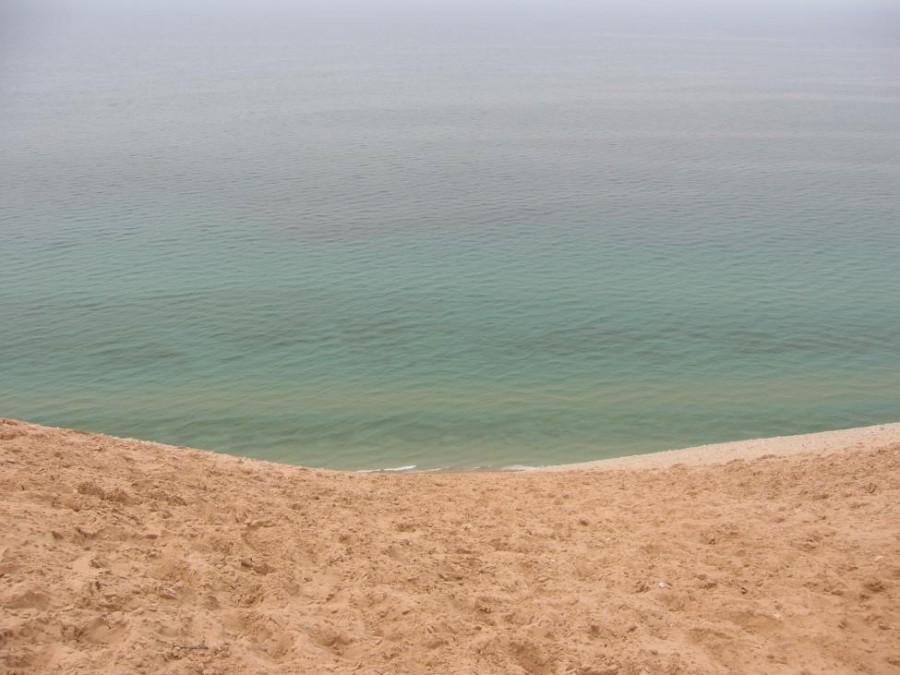Lake Michigan: a man-made ecosystem
Every year, Lake Michigan is a widely visited spot by both Michigan and non-Michigan residents. Whether climbing the Sleeping Bear Dunes and admiring the breathtaking view of the adjacent lake, cliff jumping, or simply swimming in the clear water, tourists and residents are always eager to visit Lake Michigan.
However, with the demise of two invasive species in Lake Michigan, the alewives and Chinook salmon, there is concern as to whether the lake will be able to return to its natural state.
The invasive alewives are from the Atlantic Ocean and their predators, Chinook salmon, are from the Pacific Ocean. The reduction of these species could mean an increase in the numbers of native lake trout and walleyes, but scientists have indicated that this would not make the lake any more natural that it is now because almost all of Lake Michigan’s ecosystem is not natural.
The current level of trout population only exists because of massive efforts by the state to breed and release million of trout into the lake every year, said Randall Claramunt, a fisheries biologist with the Michigan Department of Natural Resources, to DNA info Chicago.
Claramunt asks an important question. Is it possible to restore the lake’s natural ecosystem that we have destroyed? The fisheries biologists responsible for the stewardship of the Lake Michigan say that it is not possible, as the lake has been a man-made ecosystem for nearly a century.
This is interesting news to senior Madeline Flynn, whose family vacations at Lake Michigan every year.
“Even after spending so much time on the lake, my family and I had no idea that the natural ecosystem of the lake has been compromised for such a long time,” said Flynn. “It’s sad that we have destroyed its natural ecosystem.”
“As Michigan residents, I feel as though it is our responsibility to take care of our resources,” Flynn added. “I wish there was something that could be done to revert the lake back to its natural state.”
During the last 15 years, invasive quagga and zebra mussels, brought from Eastern Europe, have been placed the lake to filter the water to make it crystal clear, according to the National Oceanic and Atmospheric Administration’s Great Lakes Environmental Research Laboratory. The mussels, which are now as dense as 35,000 per square meter, have nibbled on all of the microscopic phytoplankton during their feedings and, in the process, have starved the native crustaceans that feed on the plankton. Although Steve Pothoven, a fishery biologist at Great Lakes Environmental Research Laboratory, hesitated to say that native crustaceans like diporeia are extinct in the lake, he says that the number of crustaceans is currently too small to effectively measure.
In 1967, billions of alewives died from man-made pollution on the southern tip of the lake that allowed blue-green algae to bloom, making the water so toxic it killed dogs that drank it.
Today, brown trout, lake trout, rainbow trout, and Coho salmon all exist because state stocks the lake every year to increase their population.
But all hope is not lost. Scientists are working to create a balance in the lake’s ecosystem, although they agree that it is not possible to return the lake to the way that it was more than a century ago.

